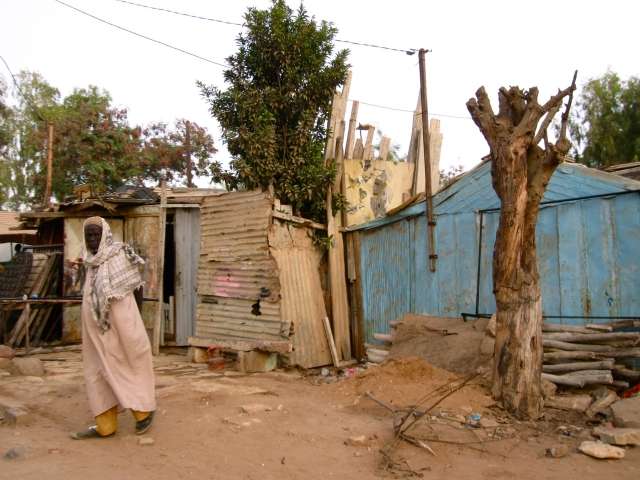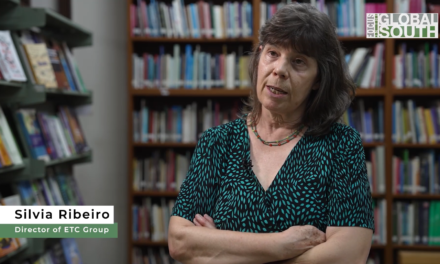The race of globalisation is leaving the majority of the world’s population far behind. According to Unicef, the richest 20% of the population gets 83% of global income, while the poorest quintile has just 1%. This trend is getting worse. A new UNDP report called “Humanity Divided: estimates that 75% of the population lives in societies where income distribution is less equal now than it was in the 1990s, although global GDP ballooned from US$22 trillion to US$72 trillion.
For developing economies in Asia, the Gini coefficient — which measures income inequality on a scale from zero to one where one is worst — rose from 0.33 in 1990 to 0.46 in 2010.
Inequality corresponds with greater economic uncertainty, lower investment, and high social tensions and political instability — with the potential for violence and conflicts between groups. It demolishes human rights for the vast majority, especially for vulnerable groups like women, children, and the elderly.
What causes inequality? The UNDP states: “Specific aspects of globalisation, such as inadequately regulated financial integration and trade liberalisation processes, whose benefits have been distributed very unequally across and within countries, have played a significant role in determining the upward trend observed over the last decades.”
Globalisation causes inequality for various reasons. One is that trade and financial globalisation have weakened the bargaining position of relatively immobile labour in relation to fully mobile capital, driving down wages. The chief economist of the Asian Development Bank, in an article that argues that inequality jeopardises economic growth, notes that between the mid-1990s and the mid-2000s, labour income as a percentage of manufacturing output fell from 48% to 42% in China and from 37% to 22% in India.
The UNDP also says dependence on capital flows made countries more vulnerable to economic and financial shocks, causing lower growth and employment, which both disproportionately affect the poor.
If globalisation drives inequality, what are the remedies? The usual list of cures from UN agencies, the World Bank and IMF include measures to stop tax evasion, more progressive income tax policies, incentives for foreign investment, conditional cash transfers, subsidies and credits for small businesses and agriculture, limited expansion of public investment and social safety nets.
Two key things are apparent in these “remedies”. First, they talk about redistributing income but don’t address unequal access to sources of wealth, such as land or assets. They also avoid mentioning examples of nationalisations that have reduced extreme inequality in some countries.
Second, they don’t deal with the process of globalisation. The most ambitious among them suggest some kind of regulation of speculative financial markets to minimise volatility. The World Bank clearly states that measures to reduce inequality should not affect “free trade”.
The measures to combat inequality touted by international financial institutions ignore the structural causes of inequality. Don’t be fooled by their fashionable new name: “inclusive growth”. This idea repeats old remedies and is more concerned with profit than inequality.
If we care about reducing inequality, we must seek new solutions to the problem. One approach is “deglobalisation”, a proposal developed by Walden Bello and Focus on the Global South in response to the Asian financial crisis of 1997.
Focus on the Global South wrote: “Deglobalisation is not a synonym for withdrawing from the world economy. It means a process of restructuring the world economic and political system so that the latter builds the capacity of local and national economies instead of degrading it. Deglobalisation means the transformation of a global economy from one integrated around the needs of transnational corporations to one integrated around the needs of peoples, nations, and communities.”
For deglobalisation, there is no “one size fits all” model like neoliberalism or centralized bureaucratic socialism. Instead, according to this scheme, diversity is expected and encouraged, as it is in nature.
Some key proposals of deglobalisation to really address the relationship between globalisation and inequality are:
Reorient national economies away from export production and toward production for the local market to fulfill basic human needs, relying primarily on domestic resources and employing technologies that enhance rather than destroy the community, the environment, and life itself.
Implement policies that redistribute the sources of income and wealth such as land, ensuring domestic control over key sectors of the economy and promoting communal access to basic services like water, health care, and education.
Provide more resources to rural areas to halt the migrations that increase inequality and rob local communities through resource grabbing.
This means expanding public services in rural areas and implementing tools to boost food sovereignty that have been developed by peasants and indigenous communities.
De-emphasise economic growth based on the recognition that this growth has limits.
Instead, we should maximise equity and redistribute what is available and possible without breaking the vital cycles of nature and overshooting the carrying capacity of the Earth.
Make strategic economic decisions subject to democratic choice, rather than leaving them to the market. In other words, bring participatory democracy to the sphere of the economy.
The approach of deglobalisation is still under construction. It needs to be debated and joined with other ideas if we are to build viable alternatives to the flawed system we have today, the one that has caused explosive inequality. But it certainly holds more promise than the empty claims of “inclusive growth”.
Op-ed published in the Bangkok Post.










